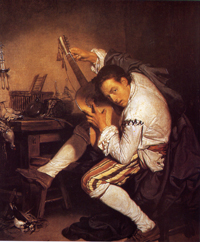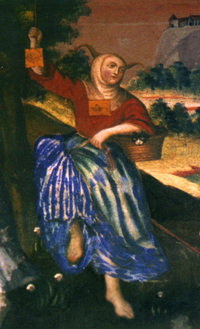PROGRAMS
Program No. 1 "Cuando Muere el Sol" Musical poetry in the works of Sebastián Durón Sebastián Durón died in exile in France, neglected
and criticized as the Spanish composer who "opened the doors
to Italian influences." This kind of controversy is typical
when new elements are brought into traditional forms. Critics and
music theorists at that time were unaware that Durón's music
had transcended the Spanish frontiers and was to be found in music
archives in Colombia, Bolivia, Peru, Guatemala and Mexico, attesting
to its international esteem. Cuando muere el sol (When the sun dies)
is an exquisite melancholic tono divino that exists in various archives,
including the Music Archive of the Cathedral of Bogotá. Combining
great poetic imagery and
|
|
Program No. 2 "Esa Noche Yo Bailá" Feast and devotion in 17th c. Peru Prayers that rise to the sky while dancing: Prayers in a context
that, nowadays, would be unimaginable. Syncretism of pagan ceremonies
into the Catholic ritual resulted from the attempt to bridge the
gap, at least musically, between violently clashing cultures. The
villancico, as a religious musical genre full of secular elements
in 17th century viceroyal Latin America, is the focus of this concert
program. All its expressive variations are explored, allowing us
to feel the proximity of the street to the church, thesound of percussion
knocking at the doors of "paradise."
|

